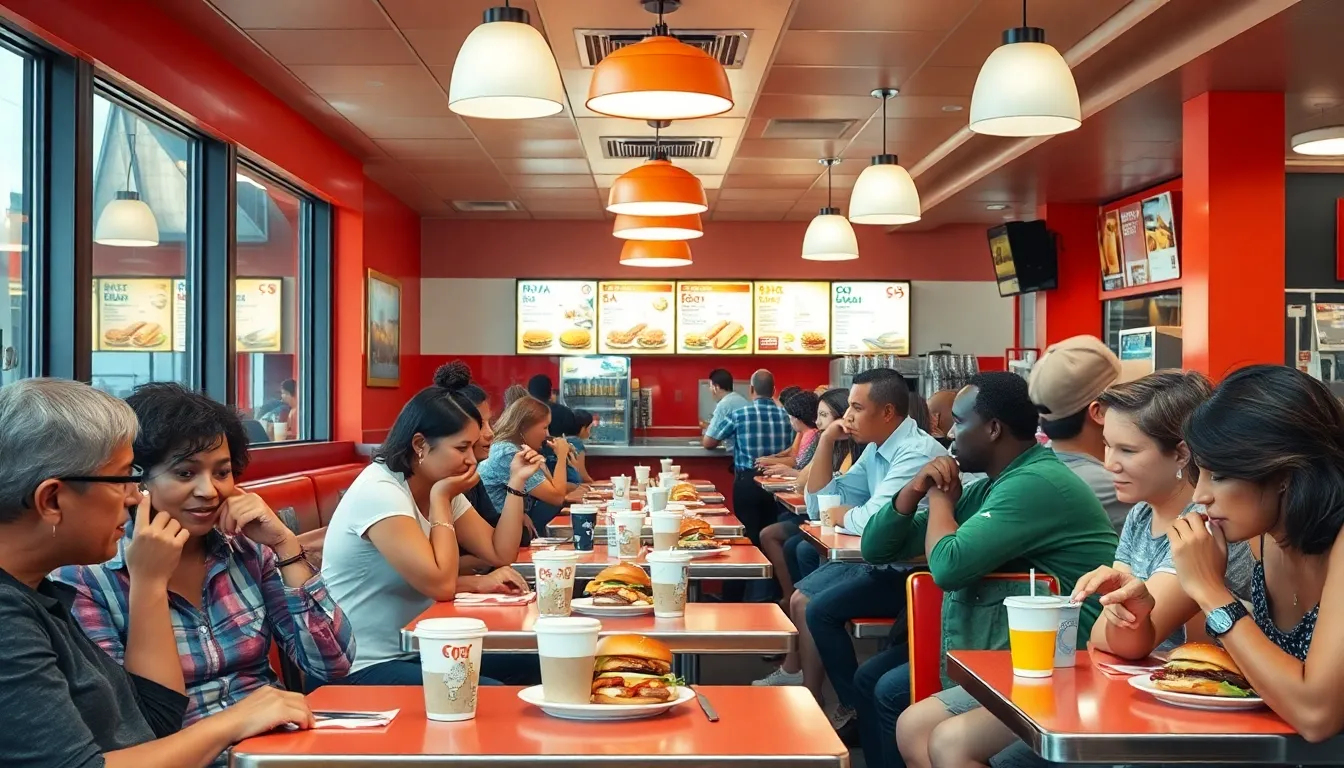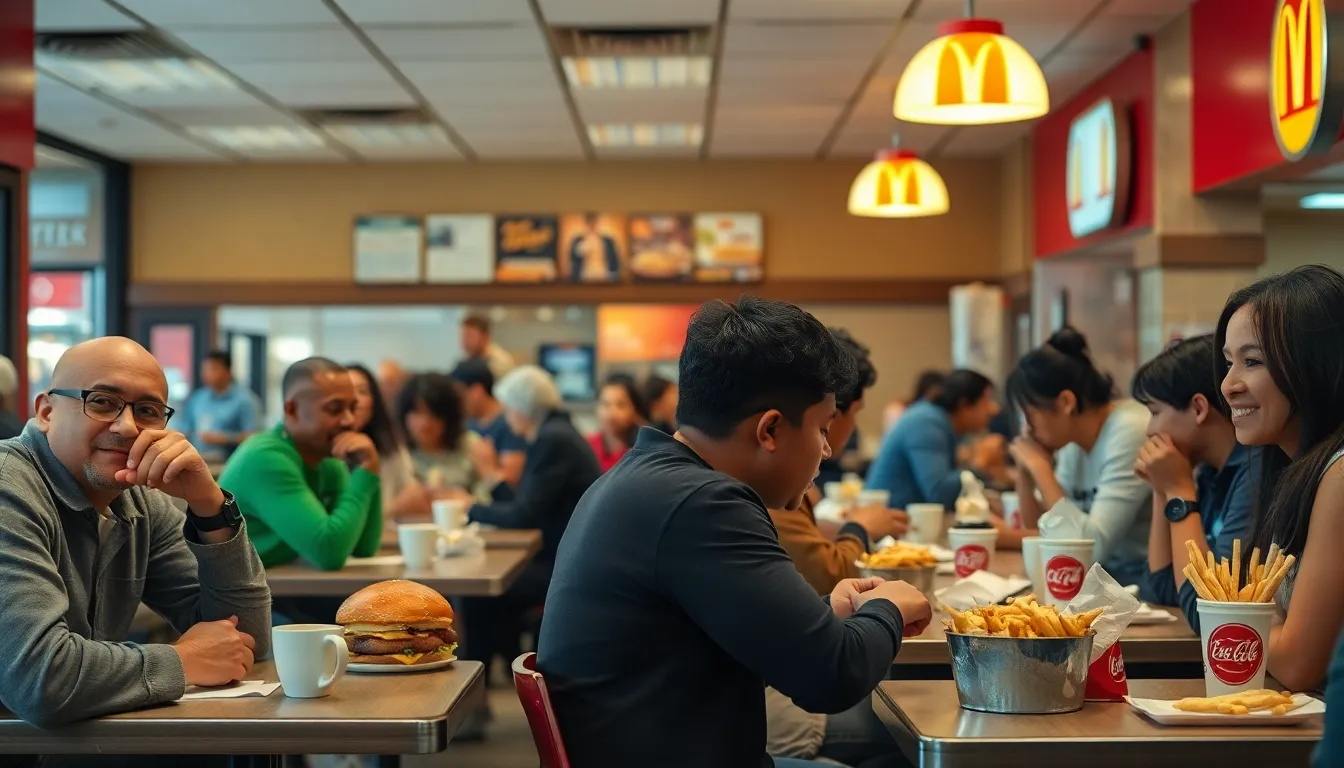Discover the Largest Fast Food Chains in the World: Impact, Growth & Cultural Influence

Fast food has become a global phenomenon, with chains popping up in nearly every corner of the world. From juicy burgers to crispy fries, these establishments cater to the fast-paced lifestyles of millions. As they expand their reach, some chains have risen to the top, dominating the industry and shaping culinary trends. In this article, readers will discover the largest fast food chains worldwide. These giants not only serve billions of customers each year but also influence local economies and cultures. Understanding their growth and impact provides insight into the ever-evolving landscape of fast food and consumer preferences.
Largest Fast Food Chains in the World
The fast food industry represents a significant segment of the global food market, generating revenues exceeding $800 billion annually. Fast food chains prioritize speed, convenience, and affordability, appealing to a wide range of consumers. These establishments leverage franchises for rapid expansion, leading to a presence in over 100 countries. Key characteristics of the fast food industry include:-
- Standardization: Fast food chains maintain uniformity in menu items, recipes, and service styles, ensuring a consistent customer experience across locations.
-
- Innovative Marketing: Chains employ targeted advertising strategies, utilizing social media and promotional campaigns to engage diverse demographics.
-
- Health Trends: Growing awareness of health-related issues prompts some chains to introduce healthier menu options, incorporating fresh ingredients and nutritional transparency.
-
- Technological Advancements: The use of mobile apps and delivery services enhances customer convenience, adapting to fast-changing consumer preferences.
Largest Fast Food Chains in the World


McDonald’s
McDonald’s leads the fast food industry with over 39,000 outlets worldwide and serves approximately 69 million customers each day. Founded in 1940, it offers a standardized menu that includes iconic items like the Big Mac and Chicken McNuggets. The chain generates an estimated $46 billion in annual revenue, reflecting its effective marketing strategies and commitment to convenience. McDonald’s innovative use of technology, including mobile ordering and delivery services, enhances customer experiences and drives sales.Subway
Subway ranks as the largest sandwich chain, boasting over 37,000 locations in more than 100 countries. Known for its customizable subs and healthier options, the chain appeals to health-conscious consumers. Subway generates around $10 billion in annual revenue, supported by a franchise model that allows rapid expansion. The introduction of plant-based alternatives aligns with growing health trends, further sustaining its competitive edge.Starbucks
Starbucks, a leader in the coffeehouse segment, operates more than 34,000 stores across 80 countries. It serves over 100 million customers weekly, generating approximately $32 billion in revenue annually. The company’s rich menu includes specialty coffee, teas, and food items, catering to diverse consumer preferences. Starbucks emphasizes technological integration through mobile apps, loyalty programs, and delivery services, enhancing customer engagement and satisfaction.KFC
KFC, known for its fried chicken, has over 24,000 locations globally. Founded in 1930, KFC generates about $27 billion in annual revenue, reflecting its strong brand presence and unique recipe. The chain adapts its menu to meet local tastes, offering variations such as rice dishes and sandwiches in different markets. KFC’s focus on marketing and brand positioning contributes to its enduring popularity and consistent growth.Growth Trends in Fast Food Chains
The fast food industry experiences dynamic growth trends driven by expansion strategies and market challenges. These trends highlight the ongoing evolution of consumer preferences and operational strategies within global food chains.Expansion Strategies
Fast food chains employ multiple expansion strategies to enhance their market presence.-
- Franchise Models: Chains like McDonald’s utilize franchise models to accelerate growth, allowing local entrepreneurs to operate outlets using established branding and support.
-
- International Entry: Fast food giants expand into new countries, tailoring their menus to local tastes while maintaining core offerings, as KFC does with regional specialties.
-
- Delivery Partnerships: Collaborations with delivery services, such as Uber Eats and DoorDash, expand reach. Chains optimize their service offerings for convenience and accessibility.
-
- Digital Transformation: Investment in technology streamlines operations, enhances customer experiences through mobile applications, and facilitates online ordering systems.
-
- Menu Diversification: Major brands respond to health trends by introducing healthier options, leveraging plant-based items, and promoting transparency in ingredient sourcing.
Market Challenges
Despite significant growth, fast food chains face various market challenges.-
- Health Trends: Growing health consciousness among consumers impacts demand for traditional fast food options, prompting chains to adapt menus accordingly.
-
- Regulatory Pressures: Stricter health and safety regulations necessitate compliance, influencing operational costs and menu management. This affects profitability for some chains.
-
- Supply Chain Disruptions: Global events and economic uncertainties disrupt supply chains, leading to increased costs and potential shortages of key ingredients.
-
- Sustainability Concerns: Rising awareness of environmental issues pressures fast food chains to implement sustainable practices, including sourcing responsibly and reducing packaging waste.
-
- Competition: Intense competition from both traditional fast food outlets and emerging fast-casual concepts forces giants to innovate continuously and maintain consumer loyalty.




